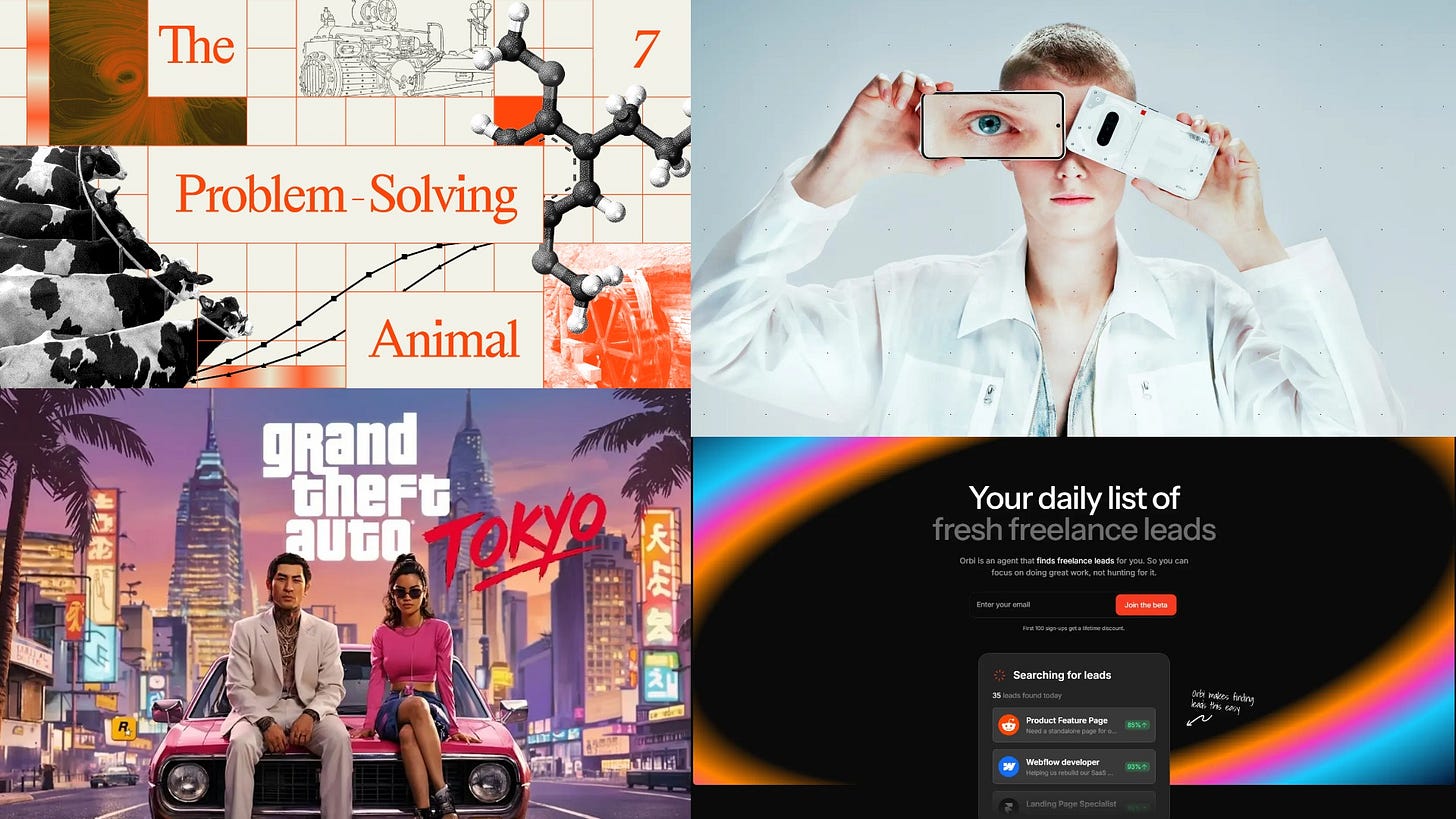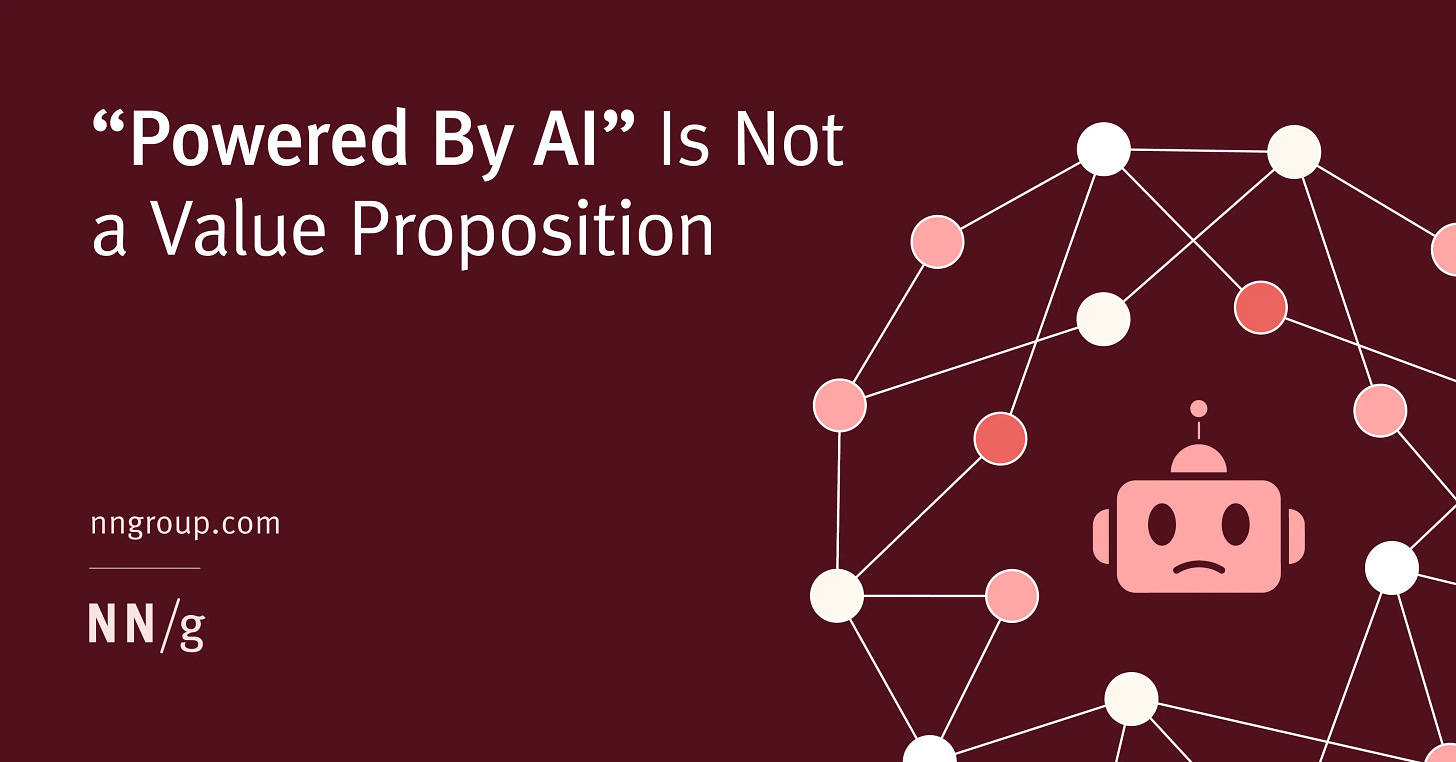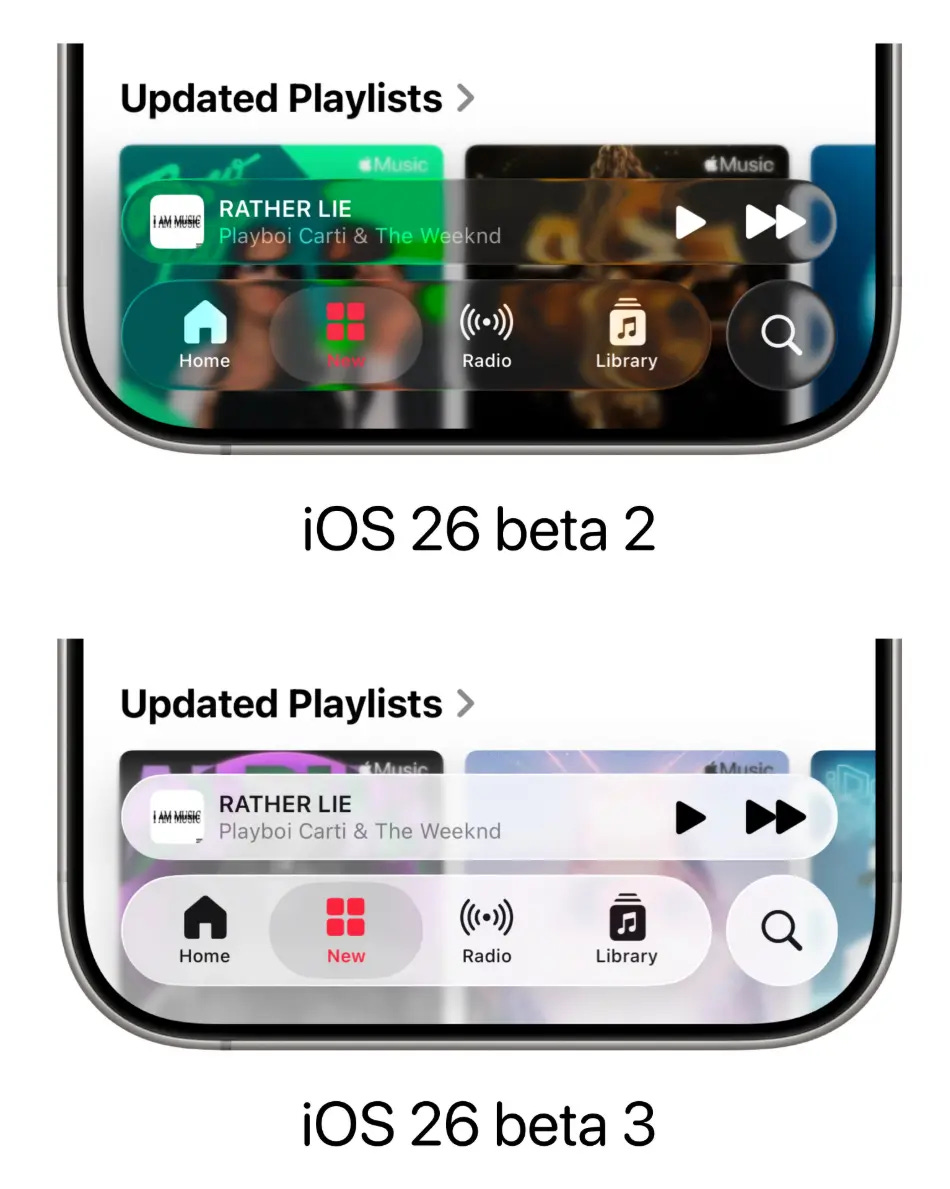Issue 158
Sobering up AI in Tokyo
Hello, dear readers! 👋
In this issue, among other things:
How a clash with the market sobered up a strong product team
Why do you need to start creating a product with a value proposition
Practical lessons on Cursor
Office software package based on AI
Impressive aerial photos of animals and nature
Why are there no unsolvable tasks for humanity
…and much more!
Enjoy reading!
🗞 News and articles
«Powered By AI» Is Not a Value Proposition
NNGroup explained why it is important to start creating a product by defining a value proposition, why it should shape the product's functions, and why the presence of AI alone cannot be the main value of the product.
Main thoughts:
A value proposition is a promise of specific benefits, not a description of functions or technologies.
A strong sentence describes "what" the user will receive, not "how" it will be achieved.
Examples of good formulations: "Accelerate your research", "Save time and money"
Examples of weaknesses: "New design", "10 new features", "Now with AI"
Focusing on a single task helps the product to be understandable, reliable and quickly enter the market. For example, this was the case with the first versions of Dropbox, Uber and Instagram — they solved one problem, but they did it well.
AI is a technology, not a value. Without context, it only confuses and can even reduce conversions.
The phrase "Powered by AI" can mean anything. It shifts responsibility to the user for how the product will be integrated into their processes.
Often, implementing AI means launching a chatbot. This solution offers many possibilities, but it has a high entry threshold.
Now managers are ready to implement any AI tools to be modern. When this hype passes, only products with a clear value will remain in operation.
The early validation lesson: designing Quotient’s prompt sandbox
Evil Martians talked about their collaboration with Quotient— a startup that has conceived an ambitious AI development platform project. Together they conducted several design sprints, put together an interactive prototype and got carried away with scaling the idea. Everything was going great until the real user tests started. They showed that the audience is not ready to pay for the product and does not see the value in its basic functions.
It turned out to be a vivid and instructive story about the collision of the concept with the realities of the market. About how a strong product team can make mistakes, how to step back in time, and why not only the ideas themselves are important, but also the moment to present them to the market.
The article contains valuable insights for anyone who creates tools for new markets and technologies.
⚡️ Briefly
Apple released iOS 26 beta 3, which abandoned the concept of fully transparent liquid glass. The design presented at the WWDC presentation lasted only three months.







